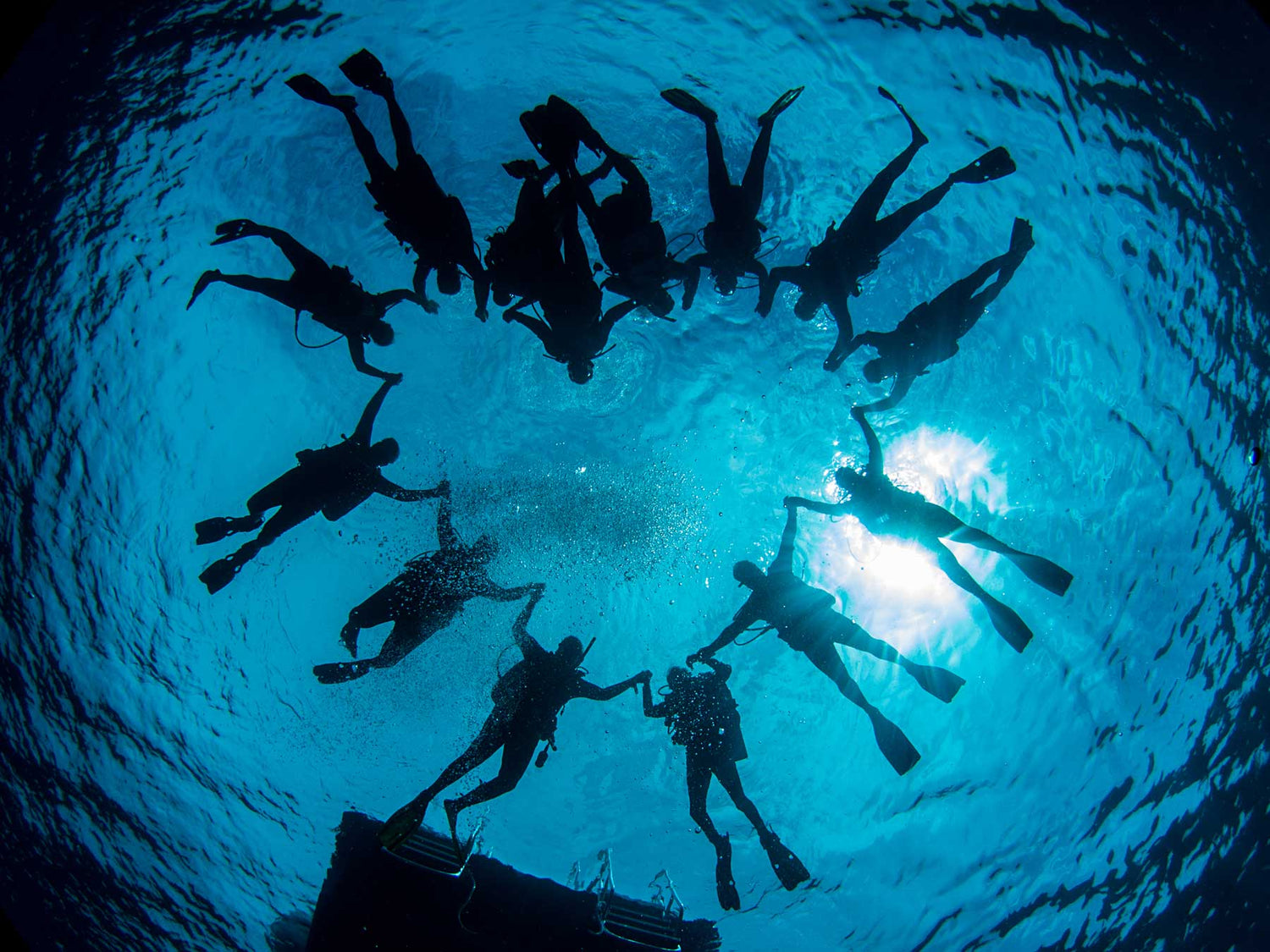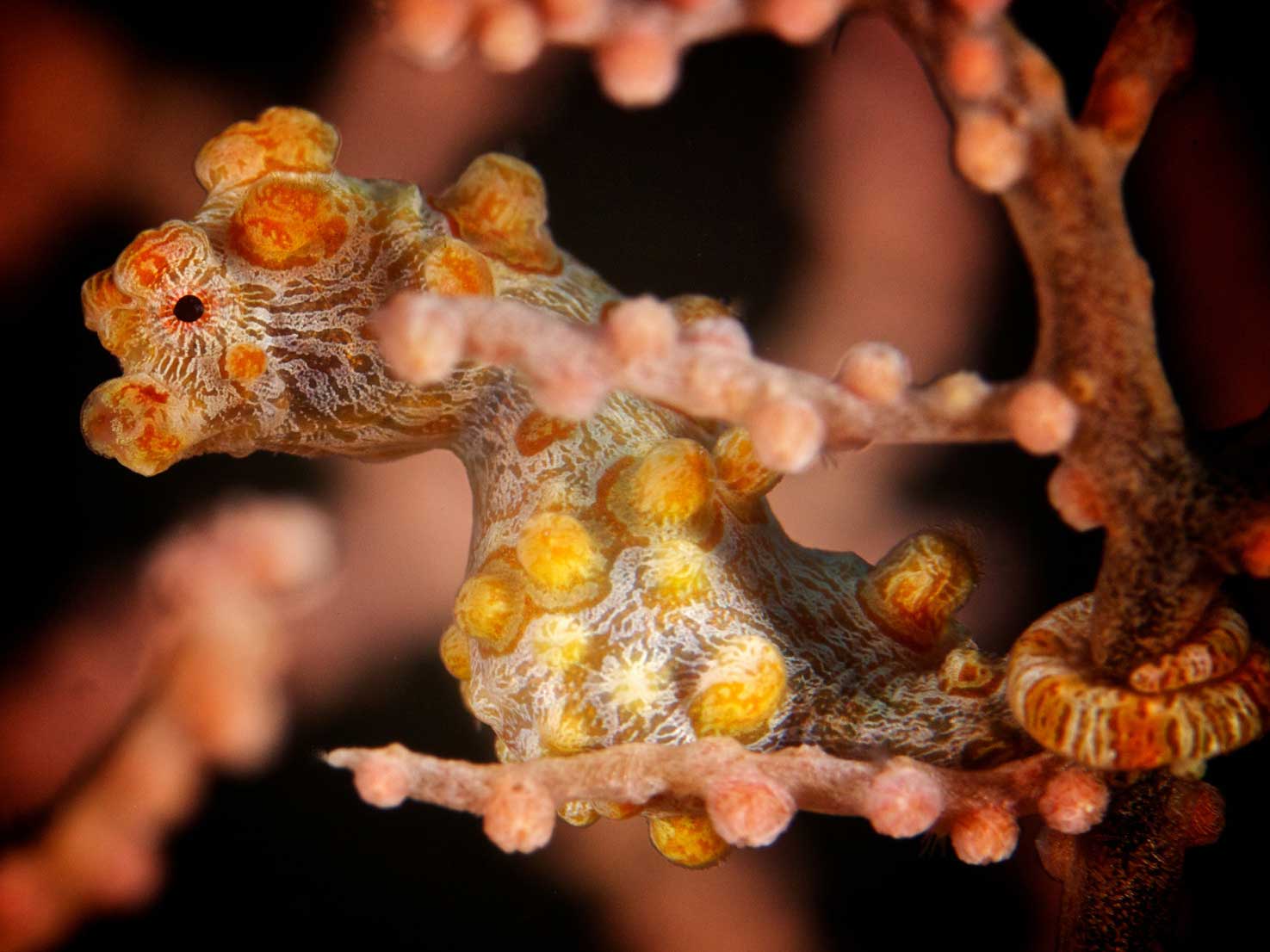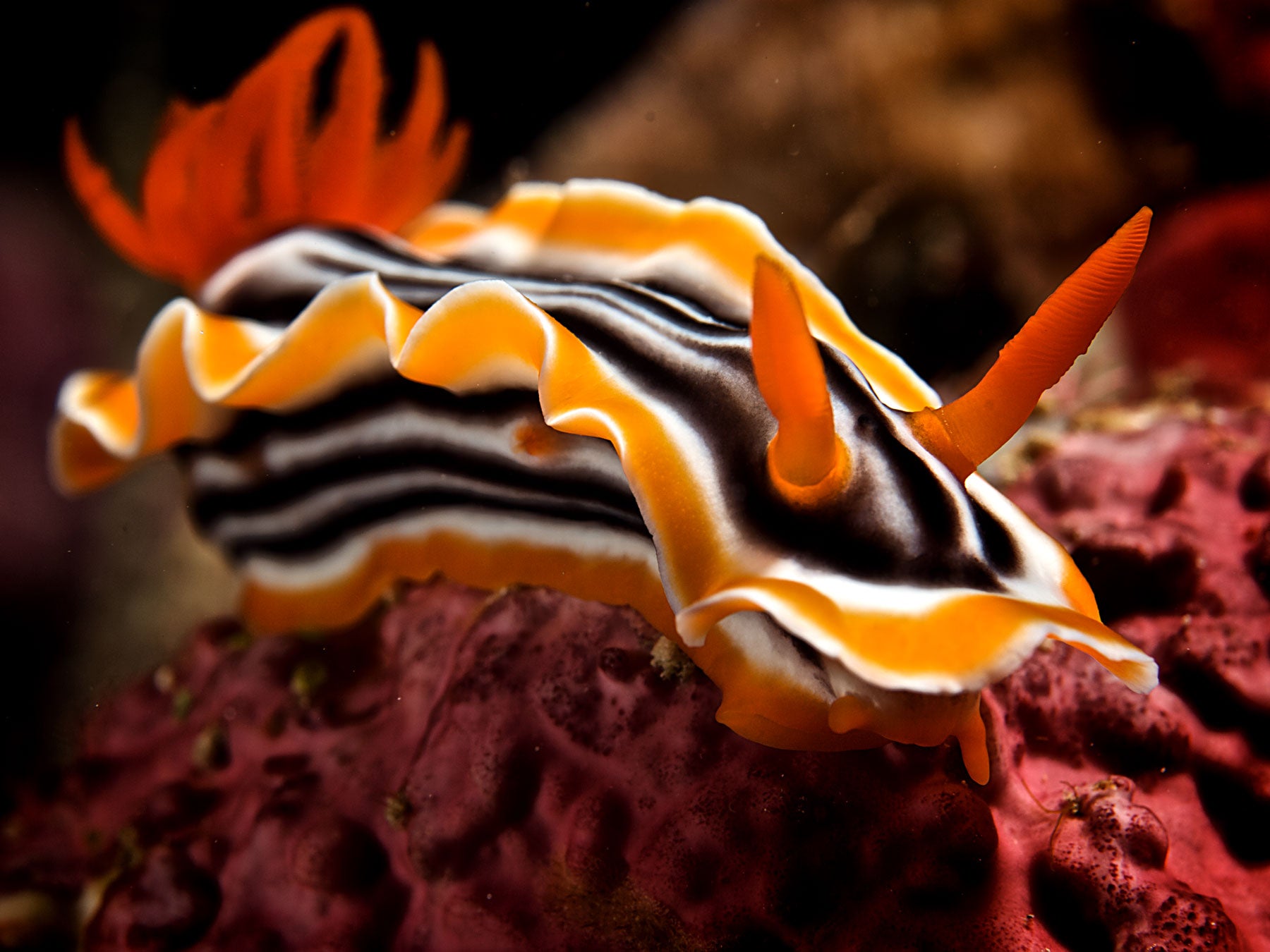A silhouette is when the form of a diver or animal is visible in the frame as a solid black shape. Silhouettes are a great choice if you're too far away from a subject to properly light it or if you're going for a dramatic statement. They can also be used as a framing element to add perspective to your work, particularly when shooting close focus wide angle.
Where
All waters, as long as there is decent clarity.
DSLR + Mirrorless
ISO: 200-1000 depending on depth and visibility
Mode: Manual or any program mode
Aperture: f/8 to start
Shutter Speed: 1/60 to 1/500
Lens: Fisheye or rectilinear wide angle
Point + Shoot
ISO: 200-1000
Mode: M Manual or any program mode
Aperture: f/8 to start
Shutter Speed: 1/60 to 1/500 (any)
Focal Length: Wide angle; with or without an external wide angle lens

Whale sharks may be known for their characteristic spotted pattern on top, but they can be equally dramatic when viewed from underneath.
Technique
Shooting a silhouette underwater may be the easiest of all techniques. The term implies a dark subject outline, with a bright background for a two tone image. The basic formula is to point your lens straight up towards the sun (or brightest part of your water column) with something that blocks the light between you.
The reason we can produce silhouettes so easily underwater is due to the way light falls off as it passes through water. These images are often produced by accident, since the severe tonal range tends to image the highlights, the darks, and not much else. The photographer looks up and sees the brights, and the darks, along with details, but the camera simplifies the image into two tones because it doesn't have the dynamic range to cover the extremes.

Distance from subject is almost a non-issue when shooting silhouettes. Shooting back up at the dive boat can really add a sense of scene and human connection to your photos.
When you make a frame (think of the dive boat, a whale shark, or a coral structure), get the sun behind it, and shoot. If it looks like a silhouette to your eye, it will definitely be one. Often even if it looks like there will be textures to your eye (in your darks) they won't be on your capture- it will be a silhouette.
This is one of the few image techniques that encourages shooting subjects far away from you. With 100' of visibility you can silhouette a boat that is 100' away from you.

If the coral formation is cooperative and you pay attention to your positioning, a close focus wide angle (CFWA) shot can be elegantly framed by a silhouetted diver and reef.
Strobes
Technically, strobes have nothing to do with silhouettes, so you don't need them. Theoretically, the strobe can even defeat the silhouette by filling in the shadow areas with color and light. But in practice, shooting directly into the sun (even when it is blocked) will overwhelm the strobes unless you are very close to the subject. Therefore, we can make a silhouette just a part of the image (specifically the background farther away) even with the flash going off in a close focus wide angle (CFWA) image.

Flash is technically the enemy of a silhouette but it can be used to emphasize the foreground while a more distant subject is silhouetted in the background.
Additional Reading
Close Focus Wide Angle In Depth













